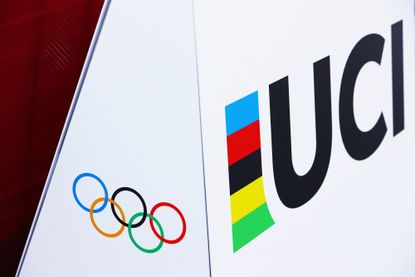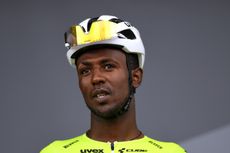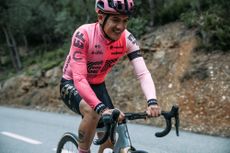UCI和other sports bodies will have to decide if they incorporate IOC's new transgender guidelines
New guidelines will not take place until after the Beijing Winter Olympics


The latest race content, interviews, features, reviews and expert buying guides, direct to your inbox!
Thank you for signing up to The Pick. You will receive a verification email shortly.
There was a problem. Please refresh the page and try again.
The International Olympic Committee has updated its guidelines in relation to the participation of transgender women within competitive sport, but has shifted the onus onto each sport to decide if they follow the rules or not.
In a marked difference from the 2015 guidelines that stated that trans women had to reduce their testosterone levels to under 10 n/mol per litre for at least a period covering 12 months before being allowed to complete, the IOC have now reversed that requirement.
The new framework - which doesn't come into effect until after the forthcoming Beijing Winter Olympics - now says that transgender women no longer need to suppress their testosterone levels to compete in female sports.
It adds that there should not be any presumption that trans women possess an advantage over natal women, a ruling that is likely to cause some disagreement within sports.
Despite the new updated rules, however, the IOC has refrained from introducing them across the board and will allow individual sports to determine their own rules, allowing for restrictions to be placed on trans women competing in female categories in the interest of fair and safe competition.
The IOC's 10-point document advised that sports should make their decisions based on "robust and peer-reviewed science...which demonstrates a consistent, unfair and disproportionate competitive advantage and/or unpreventable risk to the safety of the athletes."
In responding to the IOC's announcement, when asked for a statement by Cycling Weekly, the UCI refered back to their their last updateson the matter in 2020, setting out that they require trans women to lower their testosterone levels to 5nmol/L, half the amount stipulated in the IOC's previous framework.
Reasoning why the low figure, the UCI said that it was because on average women have testosterone levels between 0 and 1.7 mol/L; most trans women, however, have testosterone levels that sit well below the 5 nmol/L mark.
Athletes with differences in sex development, such as the South African runner Caster Semenya, are also covered by the new framework, meaning in principal she would be eligible to compete, should World Athletics decide to implement the UCI's rulings.
In 2018, Rachel McKinnon became the first transgender athleteto win a cycling world title when the Canadian won the women's 35-44 sprint during the UCI World Masters Track Championships. She retained her title the following year.

Thank you for reading 10 articles this month* Join now for unlimited access
Enjoy your first month for just £1 / $1 / €1
*Read 5 free articles per month without a subscription

Join now for unlimited access
Try first month for just£1 / $1 / €1
Get The Leadout Newsletter
The latest race content, interviews, features, reviews and expert buying guides, direct to your inbox!
Chris first started writing for Cycling Weekly in 2013 on work experience and has since become a regular name in the magazine and on the website. Reporting from races, long interviews with riders from the peloton and riding features drive his love of writing about all things two wheels.
Probably a bit too obsessed with mountains, he was previously found playing and guiding in the Canadian Rockies, and now mostly lives in the Val d’Aran in the Spanish Pyrenees where he’s a ski instructor in the winter and cycling guide in the summer. He almost certainly holds the record for the most number of interviews conducted from snowy mountains.
-
-
 Biniam Girmay to miss Glasgow World Championships amid reports of UK visa issues
Biniam Girmay to miss Glasgow World Championships amid reports of UK visa issuesThree other Eritrean riders: Natnael Tesfatsion, Merhawi Kudus, and Amanuel Ghebreigzabhier, also reported to have been denied UK visas
By Adam BecketPublished
-
 'It’s not a superbike. It’s, simply, a superb bike' - Allied reintroduces new ALFA road racing bike
'It’s not a superbike. It’s, simply, a superb bike' - Allied reintroduces new ALFA road racing bikeArkansas-based carbon bike manufacturer Allied Cycle Works has updated its Alfa road racing bike, and is proudly reintroducing its flagship competition steed with some bold promises.
By Anne-Marije RookPublished
-
 Back to school - Ryan Owens on training for the Olympics while studying for a masters in business
Back to school - Ryan Owens on training for the Olympics while studying for a masters in businessThe 27-year-old plans on returning to the track after completing an MBA
By Andy McGrathPublished
-
 Does Richard Carapaz’s Rapha Olympic champion's jersey break UCI rules?
Does Richard Carapaz’s Rapha Olympic champion's jersey break UCI rules?The Ecuadorian's special EF Education-EasyPost kit might not be gold enough for the UCI
By Tom DavidsonPublished
-
 Jason Kenny retires from cycling, becomes GB sprint coach
Jason Kenny retires from cycling, becomes GB sprint coachBritain's most successful Olympian steps off bike after winning seven gold medals over career
By Adam BecketPublished




